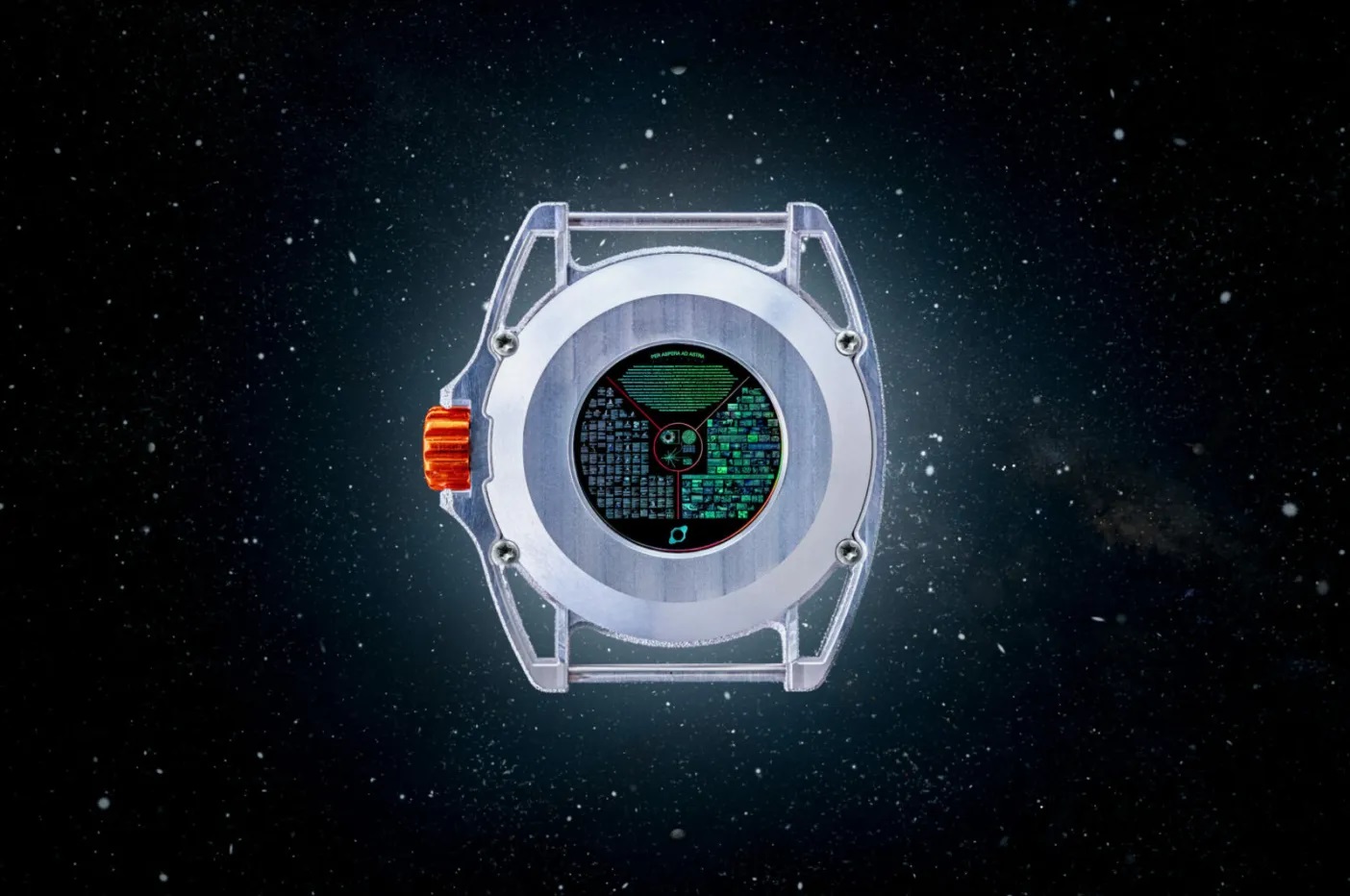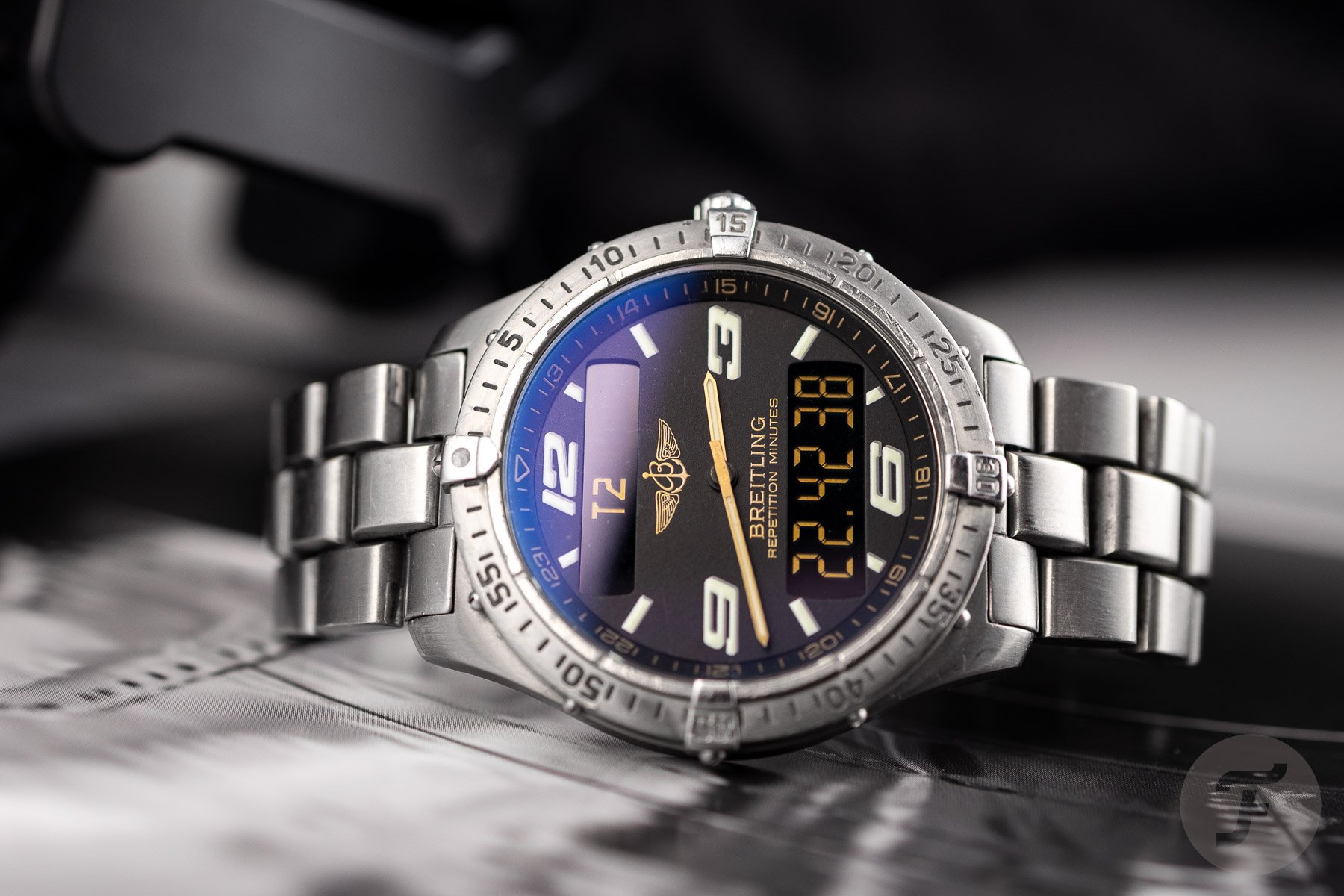Journey To The Moon With The Barrelhand Monolith
We still don’t know what the Barrelhand Monolith will look like, but we know it will be special. The 3D-printed case, for instance, will feature the Air-Lock crown system. Unlike a screw-down crown, an Air-Lock crown is always sealed. Inside the watch will beat the M1, a caliber that uses a Sellita SW300 as the starting point but, after some serious upgrades to make it more robust, now carries the Chronofiable A8 certification for shock resistance. The dial is still a mystery, but the case back has been in the news already. And that’s not just because it’s something special but also because it did something special. It went to the Moon! And that extraterrestrial spot is where the Barrelhand Monolith should excel.
Barrelhand is the brand of Karel Bachand from San Ramon, California. In 2012, as an engineering student, Bachand fell in love with the Urwerk UR-202. He couldn’t afford the watch, so instead he built a replica of it himself. That’s no mean feat. And he didn’t stop at replicating something complicated. Bachand, who is a fool for futuristic aesthetics and innovative materials and solutions for (nonexistent) problems, created his very own watch, the Project 1. The watch, which took seven years to develop, shows its maker’s Urwerk inspiration with its combination of digital jumping hours with linear minutes to display the time. There are also high-quality 3D-printed steel parts used throughout the Barrelhand Project 1.
After Project 1 comes…? The Barrelhand Monolith
The 3D-printing process helped create 10 watches, but although it also helped keep the cost down, the Barrelhand Project 1 still had a premium price of US$30,000. For 30 grand, you could get a watch designed and manufactured in the USA, featuring a world-first 3D-printed movement bridge. The printing was so precise that the tolerances were four times thinner than a strand of human hair.
The second watch from Barrelhand — the Monolith, not Project 2 — is also something that stays off the beaten path. This one is designed and engineered for the future of space exploration. While Omega’s Moonwatch was originally designed as a chronograph for racing drivers and their entourages, the Barrelhand Monolith — just like the Bulova Accutron Astronaut and the Fortis Cosmonauts Chronograph — is specifically designed for astronauts. The result is an original, high-tech, 3D-printed, lightweight watch with a rather unexpected twist.
It’s a chassis, not a case
Barrelhand doesn’t like the word “case.” Instead, the brand uses the term “chassis” for the piece of the watch that holds the movement (though you could also call it an “airframe”). As you’d expect, the Monolith has an ultra-light 3D-printed chassis. This printing process made it possible to create reusable rockets, such as the SpaceX Falcon 9, and now it made a fully 3D-printed 38 × 10.9mm chassis that is more than 40% lighter than a solid case possible. The material used for the skeletonized chassis is aerospace-grade Ti 6Al-4V titanium.
Besides the movement, chassis, and Air-Lock crown, other interesting features include ISO-certified aerospace hardware that’s compatible with ISS servicing tools and the Memory Disc on the case back — sorry, back of the chassis — with 4.5GB nano-engraved, permanent data storage.
Odie on the Moon
The Monolith might not be fully ready for us on the Moon and other extraterrestrial places yet, but the “chassis back” already made it to the Moon. Barrelhand worked with a company called Intuitive Machines (IM), a contractor working on NASA’s CLPS (Commercial Lunar Payload Services) project. This company aims to find ways to move cargo to and from the Moon, which led to the creation of Intuitive Machines’ Nova-C lunar lander Odysseus — “Odie” for short.
Odie left our home planet with stuff from outdoor brand Columbia, artist Jeff Koons, and a Monolith chassis back from Barrelhand on board. It landed on the Moon’s surface on February 22nd, 2024. Odie was part of the first private Moon landing ever, but it didn’t exactly go as planned. Upon touchdown near the lunar South Pole, Odie broke a leg and tilted over. The machine is now on standby to save batteries. “Good night, Odie. We hope to hear from you again,” IM wrote on X.
The essence of home
Anyway, on its side or not, Odie did put the back of the Monolith on the Moon. Integrated into it is a 19mm-diameter plaque, the Memory Disc. This disc is made with NanoFiche, “a space-age archival storage and analog technology with extremely high storage capacity.” Made from nickel and gold, the Memory Disc is also sealed with a layer of sapphire. While the development of the Memory Disc was hard, what to put on the disc proved to be almost as challenging. It was hardcore engineering that made the disc and got it onto the lunar surface, but what’s on it is very philosophical. “The Memory Disc has been designed to celebrate the essence of home in a galactic context,” explains Nicolas Klaus, Partner & Communications at Barrelhand. Therefore, the world-famous novella Le Petit Prince by French author Antoine de Saint-Exupéry made it to the disc.
Also on the Memory Disc are various paintings and children’s artworks from around the world; 180 translations of the inspirational saying “Per aspera ad astra,” a famous Latin phrase meaning “Through difficulties to the stars”; and an updated version of the Voyager Golden Record, a 12″ gold-plated copper disk containing sounds and images selected to portray the diversity of life on Earth. There was a Golden Record on board both the Voyager space probes that were launched back in 1977.
Moon and space watches from the past, present, and future
What the Monolith looks in full like is still a mystery, but plenty of other interesting and detailed information is available on the official Barrelhand website. And once you’re there, you can pre-order the civilian version of the Monolith. It will cost you US$8,750, and the first pieces are expected to be delivered by the end of Q3 2024. “Nearly 9K…that’s Moonwatch money,” I hear you say. I know, but the Monolith is the future of space travel, not the past. And we need fresh stories from outer space linked to watches, don’t you think?
Barrelhand is doing what I think Omega, Breitling, Fortis, and a string of other Swiss watch brands with a history in (outer-worldly) aviation should be doing. I can’t wait to see the next generation of Omega Speedmaster X-33s, especially after the launch of the Speedmaster X-33 Marstimer, a good-looking watch designed to time stuff on Mars from Earth. I hope the next X-33 is ready and willing to go where no man has gone before. And the same goes for a future Breitling Aerospace or Cosmonaute.
Let me know if you also want big Swiss brands to develop and release new, boundary-breaking, astronaut-ready watches to the Earth-dwelling public. Also, tell me what you think of the concept behind Barrelhand’s latest creation, of course.









